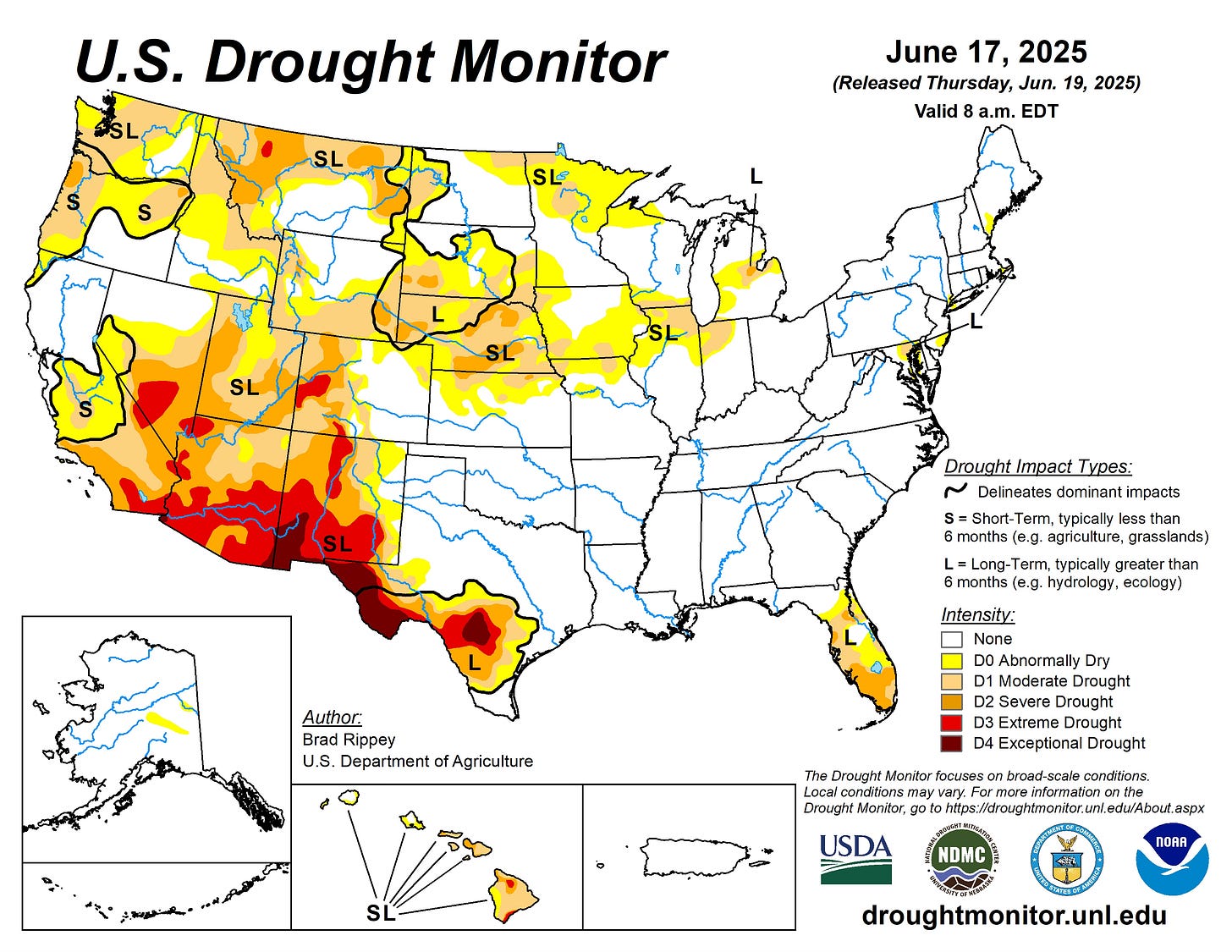Trapped Under the Heat Dome: Is a Drought on the Horizon?
With Summer in Full Swing, America's Farmers and Ranchers are Facing Profound Uncertainty
As we start the first official week of summer, many folks are turning to the grill, filling up the pool, and working on their flip flop tan. For many, summer signifies a season of leisure, relaxation, and sun-soaked days. However, a starkly different reality is taking shape for America's farmers and ranchers. They are not preparing for leisurely afternoons but for the profound uncertainty of the coming months, bracing themselves against the relentless and harsh conditions brought on by persistent drought.

Year after year, farmers and ranchers have faced summers with blistering heat, no rain, and prevailing winds. These conditions have resulted in failed or low-yield crops, heat stress in cattle, and increased pests. According to the US Drought Monitor, drought conditions reported over the last two weeks appear to increase slightly in intensity, with the highest intensity in the Southwestern United States.
Every Thursday, the US Drought Monitor, a collaborative effort headquartered at the University of Nebraska-Lincoln, releases its updated maps, providing a critical snapshot of drought conditions across the nation. This isn't simply a collection of raw meteorological data. While physical information like weather patterns and hydrological data is a cornerstone, the Drought Monitor's true strength lies in its comprehensive approach. It skillfully blends this scientific data with invaluable feedback from local experts on the ground and reports on drought impacts within local communities. This holistic view includes effects on wildfires, recreational activities, and, most importantly, agriculture. For the agricultural community, the Drought Monitor serves as an important tool. It allows farmers and ranchers to assess current conditions, enabling them to make more informed decisions about planting, irrigation, and livestock management. Furthermore, its importance extends beyond mere information; in many cases, the Drought Monitor's classifications determine eligibility for specific government programs, such as the Livestock Forage Program.
However, even a tool as vital as the Drought Monitor has its limitations. While the model excels at blending diverse data, the quality and density of physical data remain critical. In vast, rural parts of the United States, the collection of this physical data, from weather stations to stream gauges, often relies on a relatively small number of points. This scarcity of data creates a less detailed and comprehensive description of local weather conditions. To put it simply: the more data collection points available, the richer and more accurate the data fed into the model will be. Enhancing support for the Drought Monitor and, critically, increasing the number of data collection points would not only provide farmers with significantly better information on the current state of drought but would also offer invaluable insights for the broader local communities affected by these changing environmental conditions.
The concerns are particularly acute in the Southwestern United States. This region is not only experiencing the highest drought intensity but also faced a compounding factor earlier in the year with below average snowpack levels in the mountains. This already precarious situation was then exacerbated by an unseasonably early spring heatwave, which triggered a significant and rapid snowmelt. This early melt means less water available for rivers, reservoirs, and agriculture throughout the long, hot summer months. Currently, much of the US is in an abnormally dry categorization however, as the summer progresses and new maps from the Drought Monitor are released, it is a safe, yet grim, assumption that the intense drought conditions will continue to spread and deepen across a wider expanse of the United States.
When factoring in the additional pressures farmers will undoubtedly face this summer, from the uncertainties of global trade dynamics to a persistent decrease in the available agricultural workforce, the outlook becomes even more challenging. All these elements combined paint a clear picture: this summer is shaping up to be a particularly arduous and demanding one for farmers and ranchers across the country, requiring resilience, adaptability, and continued support.






